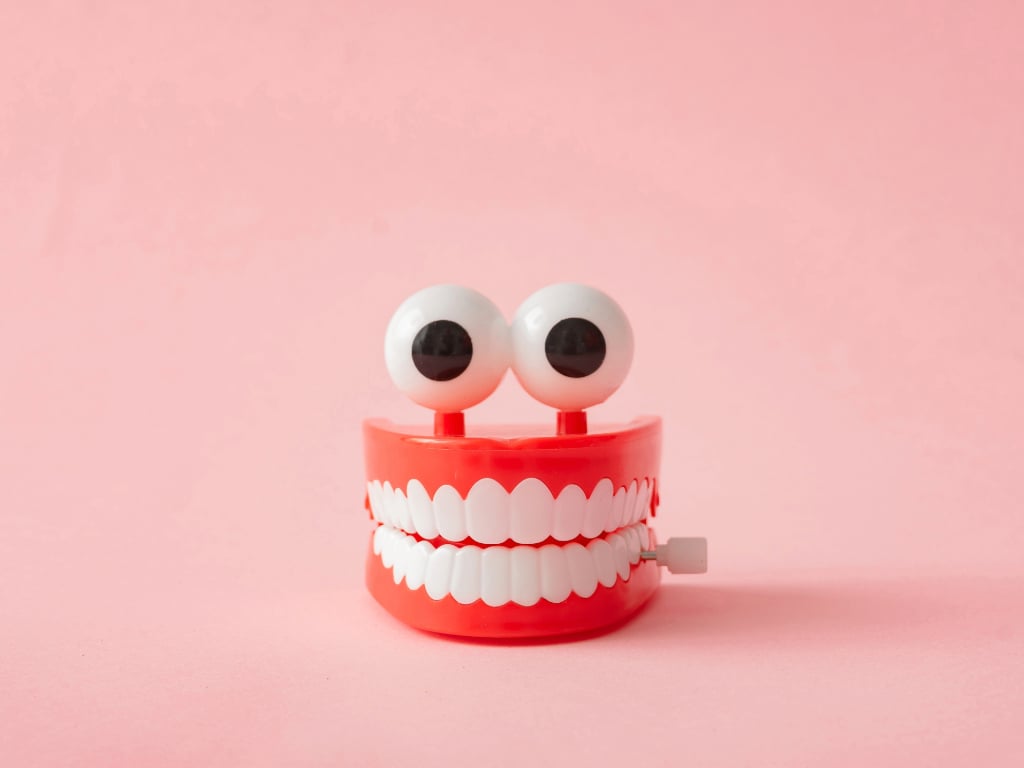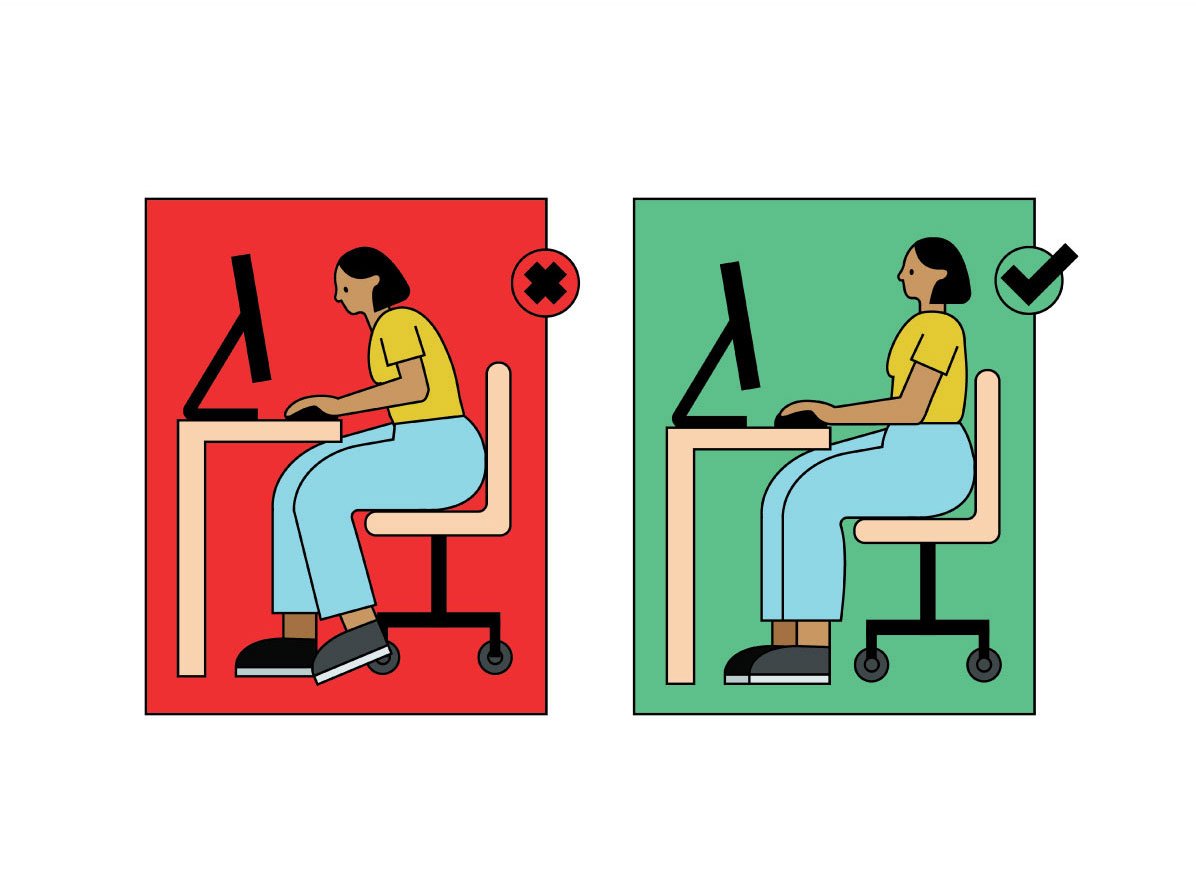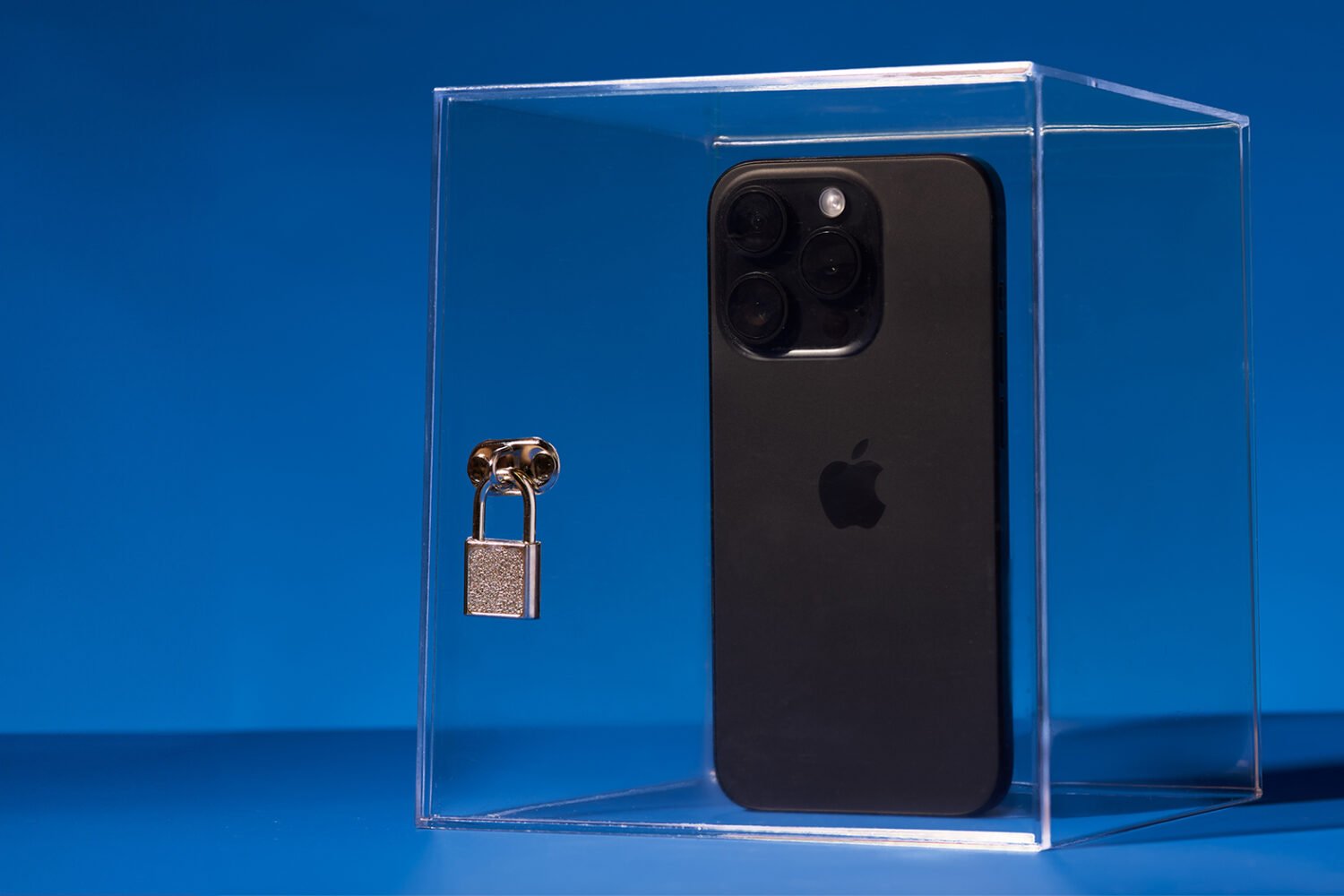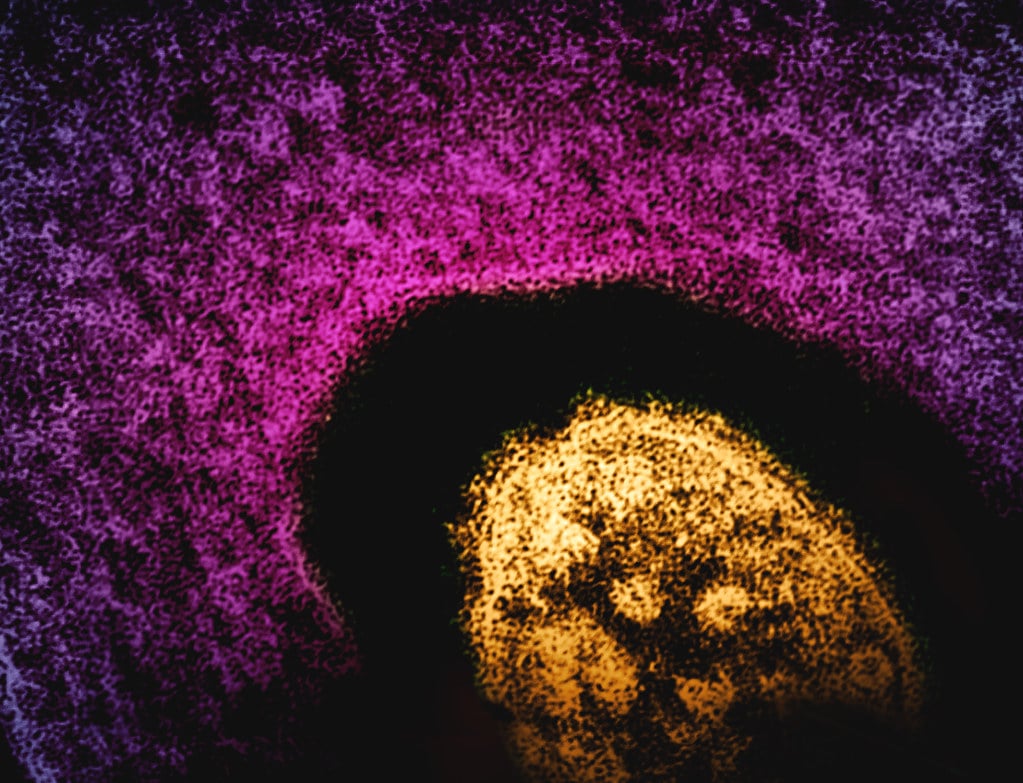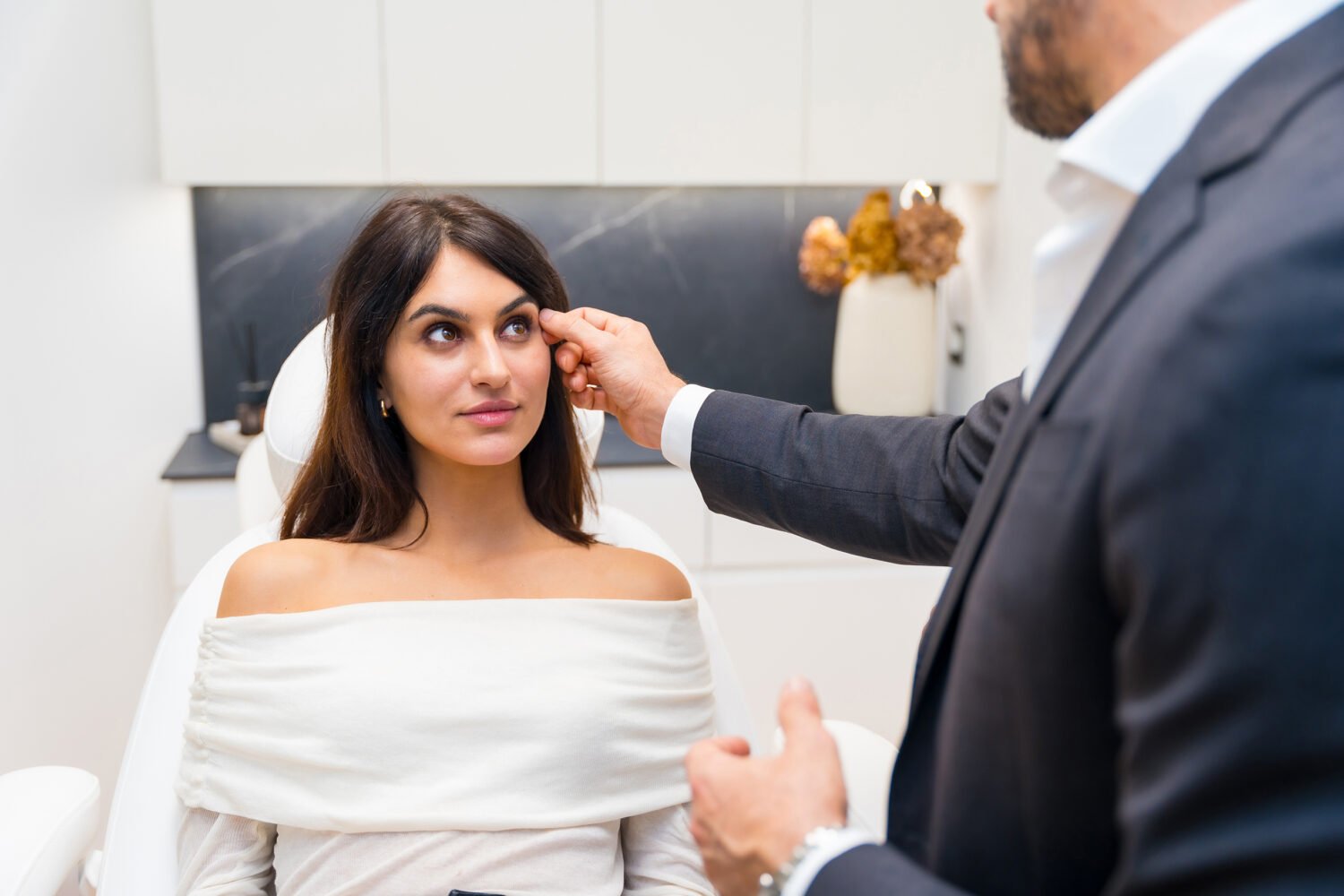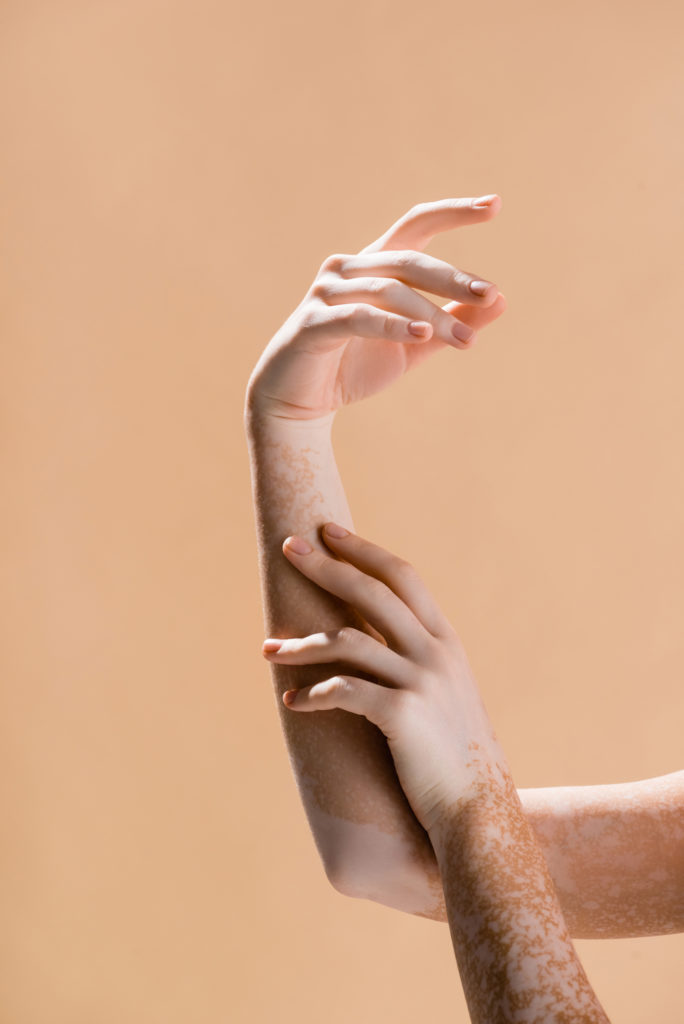 My daughter was just about to turn four when I noticed a small white ring around a freckle on her shoulder. A Google search and a phone call to the pediatrician assured me it was a halo nevus, a type of mole, and nothing to worry about. That was in the summer of 2020. A year later, when I noticed that patches of skin around her knees and ankles weren’t tanning like the rest of her legs, I chalked it up to scar tissue from childhood scrapes. Then, within a few weeks, similar patches popped up near her rib cage. On her next pediatrician visit, we were referred to a dermatologist, who gave us a surprising diagnosis—vitiligo.
My daughter was just about to turn four when I noticed a small white ring around a freckle on her shoulder. A Google search and a phone call to the pediatrician assured me it was a halo nevus, a type of mole, and nothing to worry about. That was in the summer of 2020. A year later, when I noticed that patches of skin around her knees and ankles weren’t tanning like the rest of her legs, I chalked it up to scar tissue from childhood scrapes. Then, within a few weeks, similar patches popped up near her rib cage. On her next pediatrician visit, we were referred to a dermatologist, who gave us a surprising diagnosis—vitiligo.
Things we learned quickly: Vitiligo is a condition in which people lose pigment in their skin. It affects roughly 1 percent of the population, and it’s chronic, although pigment may come and go—sometimes due to stress, physical trauma to the skin, or hormonal changes such as pregnancy. It’s technically an autoimmune disorder—your body is attacking the cells that make pigment—and vitiligo patients are at increased risk of other autoimmune disorders, though in our case (so far), vitiligo arrived alone. Something else common among patients? Halo nevus.
Research is inconclusive about what causes vitiligo. Some theories suggest that a bout of intense stress or a really bad sunburn can do it. (After learning that, I fell down a guilt-ridden rabbit hole, rethinking every minor life change I’d subjected my daughter to and over-analyzing my sunscreen application skills.) More likely, says Joy Wan, a pediatric dermatologist at Johns Hopkins, those things are triggers and not causes, and some people are just primed to develop vitiligo. Family history likely plays a role.
“There is a genetic component, in the sense that if you do have a family member with vitiligo or other autoimmune disorders, you are inherently going to have a greater risk for these types of autoimmune disorders,” Wan says, “but it’s not a [single gene passed on].”
As my family has learned, there are a lot of things still unknown about vitiligo. Luckily, more research than ever before is being done on it right now.
That’s not surprising: Awareness has increased significantly in recent years. In January 2020, Mattel released its first Barbie doll with vitiligo, as part of a collection intended to broaden the brand’s diversity and inclusion. Since then, two more with vitiligo, including a Ken doll, have been added. Last year, a new children’s book about a little girl with the condition, I Absolutely, Positively Love My Spots, hit Target shelves, and earlier this year, Canadian supermodel Winnie Harlow, who has vitiligo, appeared on the cover of Women’s Health. In an interview, she talked about how she’s been able to inspire confidence in people with vitiligo throughout her modeling career.
Today, six clinical trials are being conducted at the UMass Chan Medical School alone, and dozens more are happening across the country.
There are a lot of things still unknown about vitiligo. Luckily, more research than ever before is being done on it right now.
My daughter’s case is unusually advanced. A mild case of any skin condition, says Wan, typically affects less than 5 percent of the body’s surface area. My daughter—who has fair skin that, in the dead of winter, makes the patches harder to see—had vitiligo on about 25 percent of her body and face when she was examined with a special lamp in January 2022. A year and a half later, at the tail end of summer, when the rest of her skin is tanned and the spots are unmistakable, I’d estimate it’s closer to 35 or 40 percent.
Immediately after her diagnosis, I joined an online community called Living Dappled—which, as it happens, is based in DC. Within that community, the approach to life with vitiligo is fairly split: It’s primarily a place to embrace and celebrate the beauty of the “dappled” look and to find and share resources—including, for some, tips and product recommendations for camouflaging it. On the forum, people seem supportive of whichever approach an individual wants to take.
Because it doesn’t affect my daughter’s physical health, the decision of whether or not to try to treat the spots—to attempt to restore pigmentation—was up to us, doctors explained. The key word: “try.” There’s no magic solution for stopping the spread of depigmentation or restoring lost pigmentation. Last year, the FDA approved the first topical cream designed specifically for repigmentation in vitiligo, called Opzelura. It’s a big leap in vitiligo R&D—and it succeeded in restoring 75 percent of pigmentation in 30 percent of trial participants. It’s approved for patients ages 12 and up and can be applied on no more than 10 percent of the body’s surface area for six months. (So a great medical stride, but not life-changing for most people seeking treatment.)
The options for younger patients include prescription creams that weren’t developed for vitiligo but have been found to have some restoration properties as a secondary effect—when used in combination twice a day, every day (with occasional breaks to avoid side effects). Some patients see significant improvement, we were told. But it’s not uncommon to see no real difference, we’d later confirm.
We left the dermatology appointment with all the prescriptions, plus time to think it over. That’s when it got tricky: My then four-year-old daughter cared absolutely zero about her “spots.” I wanted to keep it that way. I didn’t want to give her the impression they were something to be fixed. On the other hand, as one piece of literature explained, it’s possible—though research is inconclusive—that the passage of time makes vitiligo harder to treat. Which could mean that, if at age 14 she decides she does care, having done nothing to restore pigmentation over the previous decade would make addressing the spots harder. We opted to give it a go but told her the creams were lotions for dry skin (@ me all you want about lying to my kid—I stand by the approach). For about four months, we followed the instructions and watched, yet nothing happened. We decided to stop.
Phototherapy—strategic light exposure to the depigmented areas—is a route we haven’t tried. The process involves either regular (at least weekly) dermatology appointments or home treatment with a not-inexpensive light. Both approaches are time-consuming and typically done in perpetuity with some breaks for observation—and any results often reverse when you stop. That’s a lot for a child who couldn’t care less, so we’re unwilling to begin without her prompting.
More research means new treatments are on the way. “We now have more and more therapies that either have recently hit the market or will probably hit the market for vitiligo,” says Wan. She points to the latest treatment, topical Opzelura, and says similar versions—some oral—are in clinical trials: “Traditionally, we didn’t have a very large arsenal of therapies for vitiligo, which meant some people chose not to treat, or they were variably effective. [Now] there is a lot of drug development in this space and also continued research efforts to understand what’s going on at the molecular and cellular basis. . . . There is a growing pipeline.”
At age seven, my daughter is still confidently unaffected by her spots—and we hope she remains so. She knows what they are, that they require extra attention when it comes to sunscreen, and that it’s not unusual to find a new one. I keep an eye out for communities she may someday want to join, research news she may someday want to know about, and new dolls, books, and people she may want to look to. I want her to see, in the larger world, more of what she sees in her mirror. In the meantime, we’re learning as we go—one new spot, community post, and FDA update at a time.
This article appears in the September 2023 issue of Washingtonian.







